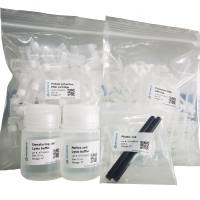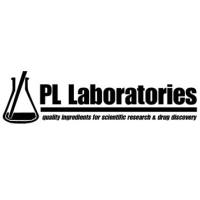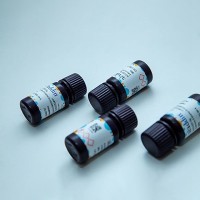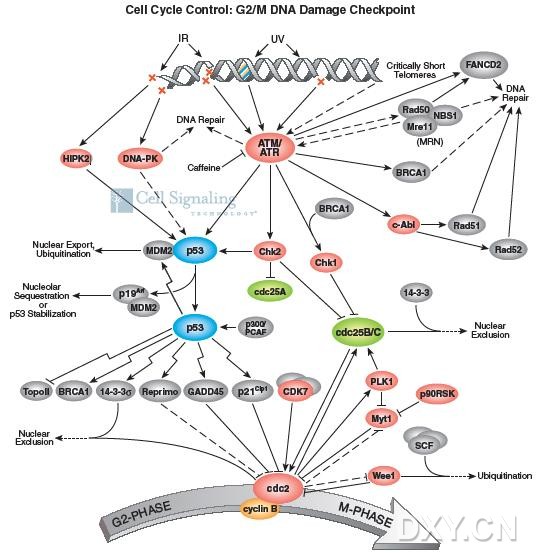玉米Proline responding 1(pro1)突变在蛋白合成和细胞周期调控中起到关键作用
伯豪生物
上海大学生命科学学院、上海市能源作物育种及应用重点实验室的研究人员证实,玉米Pro1基因(Zm P5CS2)的突变造成了突变体细胞中脯氨酸(proline)合成受阻,从而导致proline积累的减少。
突变体中proline的缺乏引起了相应的转运RNA(tRNApro AGG)空载形式(uncharged tRNApro AGG)的增多,从而激活了细胞中的GCN2激酶,该激酶通过磷酸化真核生物翻译起始因子eIF2α从而抑制了细胞中蛋白合成的普遍抑制;另一方面,突变体中proline的缺乏也引起了细胞周期相关基因、DNA复制相关基因以及细胞增殖相关基因表达的下调,从而抑制了细胞周期从G1到S期的转换。这一成果2014年6月21日在线发表于“The Plant Cell”(《植物细胞》)杂志上。
上海大学生命科学学院、上海市能源作物育种及应用重点实验室的王刚副教授和宋任涛教授分别是本文的第一作者和通讯作者。
背景介绍
玉米(Zea mays L.)既是重要的粮食和饲料作物,又是禾本科中一个重要的分子生物学与遗传学研究的模式植物。在玉米中,一系列能够引起玉米籽粒出现粉质胚乳表型的opaque和floury突变基因都已经被定位在玉米染色体的相应区域。已经克隆的opaque和floury突变基因的功能分析部分解析了醇溶蛋白合成调控的分子机理以及醇溶蛋白合成与籽粒opaque和floury表型形成的关系。
已有研究表明,玉米中大多数的opaque和floury基因(如o2, fl2, Mc和De-B30)通过影响醇溶蛋白的调控基因或者结构基因从而调控了醇溶蛋白的合成。相应地,通过RNA干扰(RNA interference, RNAi)的方式直接下调醇溶蛋白结构基因(α-, β-, γ-或δ-醇溶蛋白基因)的表达均可以引起籽粒形成opaque和floury表型。
然而,玉米中诸如o1, o5和fl1这些突变体籽粒中醇溶蛋白的含量并未发生明显地改变,这些突变体opaque和floury表型主要是由蛋白体形成和包装的异常引起的。Motto等(1996)认为还存在其它的调控机制,如氨基酸供给的异常也可能通过影响醇溶蛋白的合成从而造成opaque突变表型。近年来克隆的Mto140和O7基因的功能分析表明,氨基酸供给的限制也会引起醇溶蛋白合成的抑制,但是调控机理尚不明确。
文章亮点
脯氨酸虽然在多数生物体内并非必需氨基酸,但其在机体内,尤其是高等植物体内具有极为重要的生理功能。之前的研究认为,脯氨酸在高等植物的抗胁迫作用中扮演着极为重要的角色。近年以来,越来越多的研究表明,脯氨酸在体内可以作为一种信号分子而对高等植物的生长和发育进行调节。脯氨酸作为细胞内的游离氨基酸和蛋白合成的成分,在细胞代谢和植物生长发育中扮演着关键的角色,然而其作为信号分子的调控机制尚不明确。Pro1突变基因的克隆和功能分析解析了脯氨酸在植物生长发育过程中对蛋白合成和细胞周期G1到S期转换的调控机制(课题相关RNA-seq技术服务由上海伯豪生物技术有限公司提供)。
结果分析
pro1突变体造成粉质胚乳和苗期致死表型
1975年,Giuseppe Gavazzi等人描述了一种条件致死型的,由单基因控制的玉米籽粒的隐性突变体。纯合的pro1突变籽粒的外观呈现出发育不良、皱缩以及不透光的opaque表型(Figure 1A,B,C,D)以及淀粉、油脂和蛋白合成的减少(Figure 1G,H,I)。
若将突变籽粒进行种植,与正常植株相比较,pro1突变体幼苗的植株矮小,株高只有同一时期野生型株高的20%左右,根长只有同一时期野生型株高的25%左右(Figure 1E,F,J)。此外,pro1突变体其幼苗一般在发育到两叶期时生长受到严重抑制,继而发生坏死导致死亡。在加入外源L-脯氨酸的培养基上进行培养时,突变体幼苗可以回复到野生型表型,越过两叶期继续生长。因此,研究人员将这个新发现的突变体命名为Pro1突变。

Figure 1 Phenotypic Features of Maize prol1 Mutants.
(A)F2 ear of pro1-ref×Chang 7-2. bar: 1cm.
(B)Wild type and mutant kernels randomly selected from F2 ears of pro1-ref ×Chang 7-2viewed on a light box. bar: 1cm.
(C)Wild type and (D) pro1-ref kernels. bar: 1cm.
(E)and (F) Phenotype of wild type and pro1-ref seedlings (14 DAG). bar: 2cm.
(G), (H) and (I) comparison of starch, lipid and protein (total protein, zein and nonzein) accumulation in wild type and pro1-refkernels. For each sample, three independent biological replicates were performed. Bars represent average values ± SD,n=3 replicates (No refers to P > 0.05, * refers to P < 0.05, ** refers to P < 0.01, Student’s test), wt, wild type; pro1, pro1-ref.
(J)Comparison of seedling height and root length of wild type and pro1-ref.Bars represent average values ± SD(n=20 seedlings per genotype, ** refers toP < 0.01, Student’s test). wt, wild type; pro1, pro1-ref.
Pro1基因编码一个△1-吡咯啉-5-羧酸合成酶(P5CS)
对玉米经典突变pro1基因进行图位克隆发现,玉米Pro1基因编码一个△1-吡咯啉-5-羧酸合成酶(P5CS) (Figure 2A),它是催化以谷氨酸为前体合成脯氨酸过程中的限速酶(Figure 2B, C, D, E)。Pro1基因功能的丧失,造成突变体中脯氨酸合成与积累的下降。
Figure 2Phylogenetic Analysis of Pro1 and Biochemical Assay of Recombinant P5CS Protein.
(A) Phylogenetic relationships of Pro1 (Zm P5CS) and its homologs.
Maize Pro1 and identified P5CS in rice (monocot) and Arabidopsis (dicot) plants were aligned by MUSCLE method in MEGA 5.2 software package. The phylogenetic tree was constructed using MEGA 5.2, and P5CS of Caenorhabditis elegans, Homo sapiens, and Mus musculus were used as outgroups (see Methods). The numbers at the nodes (100) represent the percentage of 1,000 bootstraps. Zm: Zea mays; Os: Orya sativa; At: Arabidopsis thaliana; Ce: Caenorhabditis elegans; Hs: Homo sapiens; Mm: Mus musculus.
(B) SDS-PAGE gel of purified GST-P5CS protein stained with Coomassie blue. Left lane, GST- P5CS; right lane, molecular weight markers.
(C) and (D) Standard curve and its controlof Pi determination based on a malachite green colorimetric assay
(E) Kinetic analysis ofP5CS was performed using glutamate concentrations from 0 to 350 mM. Km and Vmaxwere determined from nonlinear regression to the Michaelis-Menten equation for concentrations of glutamate up to 350 mM from five replicate experiments. For each sample, five independent biological replicates were performed. Error bars represent SD.
Proline1基因功能的减弱/丧失抑制了玉米籽粒和幼苗中L-脯氨酸的合成
Pro1基因(Zm P5CS2)功能的减弱/丧失可能抑制了玉米中L-脯氨酸的合成。通过对玉米成熟籽粒进行总的氨基酸和游离氨基酸分析表明,与野生型相比,pro1-ref突变体成熟籽粒中总的L-脯氨酸的相对含量下降了35.9%(Figure 3A),总的游离L-脯氨酸的含量下降了56.0%(Figure 3B)。苗期(14DAG)氨基酸分析表明,与野生型相比,pro1-ref幼苗中总的L-脯氨酸的相对含量下降了45.2%(Figure 3C),总的游离L-脯氨酸的含量下降了100.0%(Figure 3D)。由此表明,Proline1基因功能的减弱/丧失抑制了玉米籽粒和幼苗中L-脯氨酸的合成。
Figure 3Analysis of Total and Free Proline fromMature Endosperms and 14 DAG Seedling of Wild Type and pro1-ref.
(A) and (B) Comparison of total and free proline from mature endosperm of wild type and pro1-ref .wt, wild type; pro1, pro1-ref.
(C) and (D)Comparison of total and free proline from 14 DAG seedlings of wild type and pro1-ref.wt, wild type; pro1, pro1-ref.
For each sample, three independent biological replicates were performed. Bars represent average values ± SD,n=3 replicates ~undefined_refers_to_P_~8lt~J_0.01~E_Student’s test).
pro1突变体中脯氨酸缺乏引起的空载tRNApro AGG累积从而造成了eIF2α)的磷酸化
脯氨酸的缺乏造成pro1突变体细胞中空载tRNApro AGG累积,由此引发真核生物翻译起始因子2的α亚基(eIF2α)磷酸化(Figure 4A, B, C, D, and E),造成突变体中蛋白合成的普遍下降。
Figure 4Uncharged tRNApro Accumulation Caused by Proline DeficiencyTriggers the Phosphorylation of eIF2α
(A) Free proline content analysis of 12 DAP (I), 18 DAP (II), and 24 DAP (III) endosperm from wild type and pro1-ref.For each sample, three independent biological replicates were performed. Bars represent average values ± SD,n=3 replicates ~undefined_refers_to_P_~8lt~J_0.01~E_Student’s test). wt, wild type; pro, pro1-ref.
(B) Northern Blot analysis of charged and uncharged tRNApro accumulation in developing endosperm.wt, wild type; pro, pro1-ref.
(C) Northern Blot analysis of charged and uncharged tRNApro accumulation in 14 DAG seedlings of wild type and pro1-ref cultivated with 0 mM, 1 mM and 3 mM L-proline.wt, wild type; pro, pro1-ref.
(D) Immunoblot analysis of eIF2α phosphorylation during kernel development.wt, wild type; pro, pro1-ref.
(E) Immunoblot analysis of eIF2α phosphorylationin 14 DAG seedlings of wild type and pro1-ref cultivated with 0 mM, 1 mM and 3 mM L-proline.wt, wild type; pro, pro1-ref.
pro1突变体中脯氨酸缺乏引起细胞周期G1到S期转换的抑制
Pro1基因作为玉米中合成脯氨酸过程的关键酶,对玉米生理生化的影响是多方面且重要的。RNA-seq (Figure 5)证实pro1突变体中脯氨酸的缺乏引起了细胞周期相关基因、DNA复制相关基因以及细胞增殖相关基因表达的下调,体外添加脯氨酸后这些基因表达回复至野生型水平(Figure 6A、B)。脯氨酸作为一种重要氨基酸,它的信号分子作用会涉及细胞内部多种多样的生理平衡和生化过程:通过GCN2,mTOR等与氨基酸缺乏偶合的调控环节,可改变细胞原有的基因表达模式,涉及蛋白合成与细胞周期等生命活动,诱导细胞进入修复,停滞或凋亡的模式。
Figure 5 Gene Expression Profiling Graphs of Wild type and pro1-ref.
(A) Graphs show log2 ratios of gene expression in 14 DAG seedlings of wild typeand pro1-ref.
(B) Graphs show a scatter plot comparing gene expression in 14 DAG seedlings of wild typeand pro1-ref.
(C)Graphs show genes identified as differentially expressed by Fisher’s test (red dots).
Figure 6 Cell Cycle-Related Gene Expression Analysis in Wild type and pro1-ref.
(A) RNA expression of cell cycle-related genes based on RT-PCR analysis of 14 DAG wild type andpro1-ref seedlings cultivated in1/2 MS culture medium supplemented with various concentrations of L-proline and L-glutamate. wt, wild type; pro1, pro1-ref.
(B) Expression ofvariouscell cycle-related genes in 14 DAG wild type andpro1-ref seedlings cultivated in1/2 MS culture medium supplemented with various concentrations of L-proline. Ubiquitin was used as an internal control. For each sample, three technical and two independent biological replicates were performed. Error bars represent SD.wt, wild type; pro1, pro1-ref.
Figure 7 Evidence of Aberrant Cell Cycle in pro1-ref.
(A) Cell cycle analysis of 14 DAG seedlings of wild type, pro1-ref and pro1-ref cultivated on medium supplemented with 3 mM L-proline.wt, wild type; pro1, pro1-ref.
(B)Cell cycle analysis of 18 DAP endosperms of wild type and pro1-ref.wt, wild type; pro1, pro1-ref.
(C) Cell cycle analysis of 24 DAP endosperms of wild type and pro1-ref.wt, wild type; pro1, pro1-ref.
The small graphs (I, II, and III) inserted in A, B, and C respectively are the cell cycle diagrams of 14 DAG seedlings, 18 and 24 DAP endosperms analyzed by flow cytometry. The 2C and 4C are DNA contents of the nuclei at stage G1 and S phase of 14 DAG seedlings respectively. The 3C and 6C are DNA contents of the nuclei at stage G1 and S phase of 18 and 24 DAPendosperms. The 12C and >= 24C are DNA contents of endoreduplicated nuclei at stage S phase of 18 and 24 DAPendosperms. For each sample, three independent biological replicates were performed. Bars represent average values ± SD,n=3 replicates (No refers to P > 0.05, * refers to P < 0.05, ** refers to P < 0.01, Student’s test).
用流式细胞仪进行细胞周期分析表明,与野生型相比,pro1-ref幼苗的细胞周期受到抑制,表现为4CDNA减少,相应的2CDNA增多,可能DNA扩增受到抑制(Figure 7A)。将pro1-ref突变体与野生型幼苗在萌发后移至含3mM的L-脯氨酸中培养9-10天,收取整苗进行细胞周期分析.
结果表明,在3mM的L-脯氨酸中培养的pro1-ref突变体幼苗细胞周期基本恢复至野生型水平(Figure 7A)。籽粒胚乳细胞的细胞周期分析进一步证实了G1到S期转换的抑制(Figure 7B和C)。这些结果表明,pro1-ref突变体中L-脯氨酸的缺乏抑制了细胞周期,外源添加L-脯氨酸可以促进pro1-ref突变体的细胞周期恢复正常。
Pro1基因功能的解析,有助于了解脯氨酸在植物生长与发育中的调控作用机理,进而更全面地理解它在细胞生命活动过程中的重要作用,使人们对脯氨酸的功能有了新的认识。








